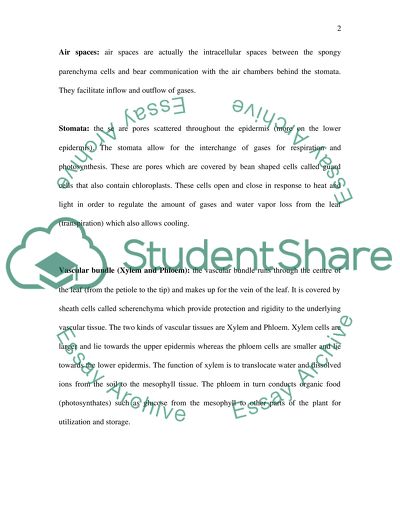Upper and lower epidermis. Palisade mesophyll, and Vascular bundle Essay. Retrieved from https://studentshare.org/health-sciences-medicine/1520846-upper-and-lower-epidermis-palisade-mesophyll-and-vascular-bundle
Upper and Lower Epidermis. Palisade Mesophyll, and Vascular Bundle Essay. https://studentshare.org/health-sciences-medicine/1520846-upper-and-lower-epidermis-palisade-mesophyll-and-vascular-bundle.


